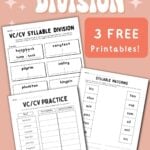Syllable Division Practice with VCCV Words: 3 Free PDFs
This post may contain affiliate links. As an Amazon affiliate, we earn from qualifying purchases. See our disclosure policy.
Syllable division is an important decoding strategy that helps children read multisyllabic words that follow the syllable patterns. Read about syllable division here, and get 3 FREE pdf worksheets for students to practice and master syllable division for VC/CV (Rabbit) pattern words.

What Are VCCV Words?
VC/CV words are words that follow this specific pattern: Vowel-Consonant/Consonant-Vowel. These words are made up of two closed syllables, each with a short vowel sound.
VC/CV words are the first words to introduce when teaching kids to read longer, multisyllabic words. They will also be the first words you use to teach syllable division.

We display our Syllable Types Anchor Chart and Syllable Division Rules Posters handy for easy referencing!
Dividing VCCV Words
Teaching syllabication, or dividing words into syllables, is a research-backed strategy to help students read longer, more complex words.
Use closed syllables and begin teaching how to mark, or code, closed syllable words. This is helpful for kids as they begin to train their eyes to see patterns in words.
Recognizing these patterns will tell them how to break apart longer words and read words correctly.
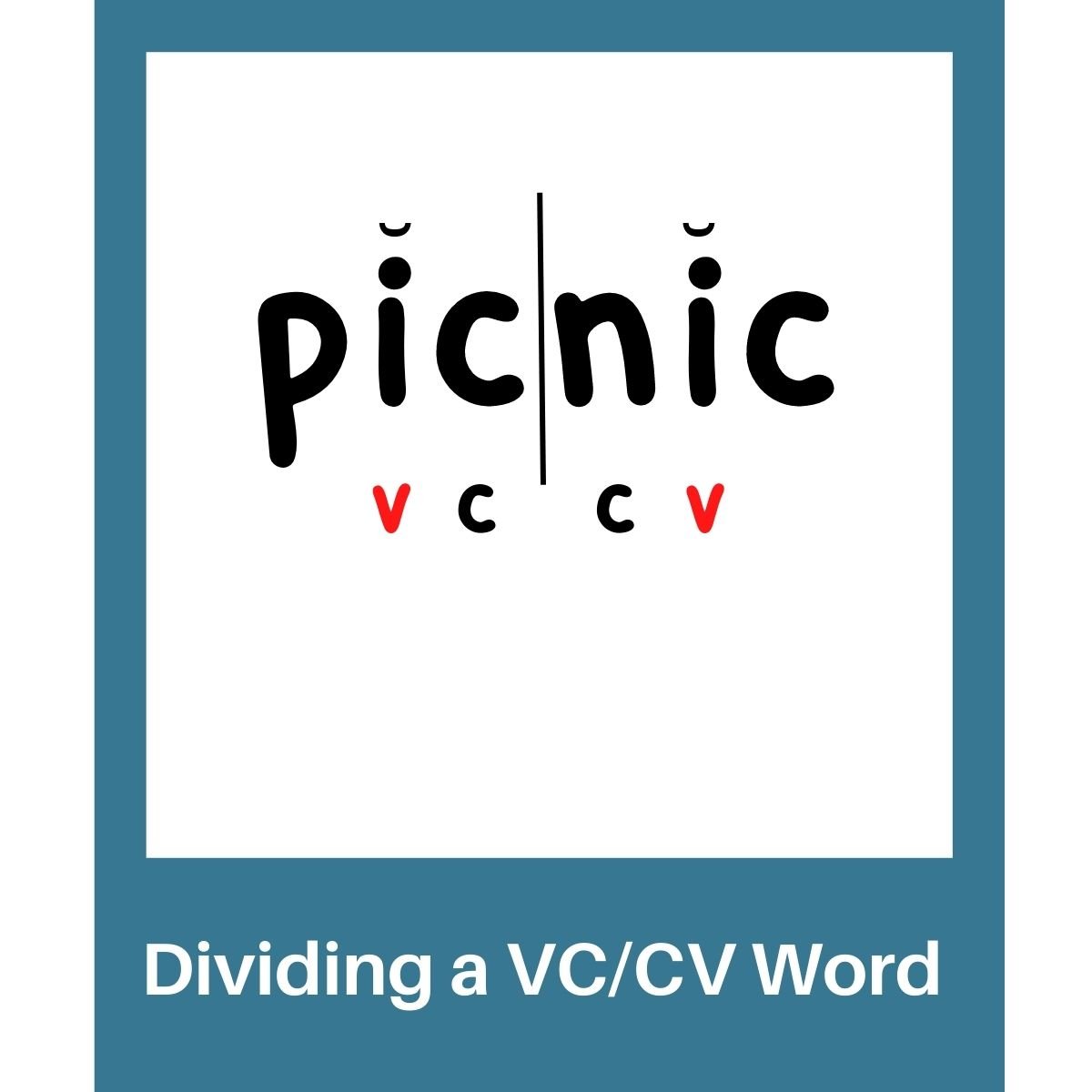
How to Mark VC/CV Words
- Find the vowels. Label them with a V.
- Find the consonants that are between the vowels. Label them with a C.
- Divide between the consonants.
- Draw a line between (or swoop) the two syllables/ Because they are two closed syllables, mark the vowels with a breve, or short vowel symbol. (This reminds children that they need to say the short sound of the vowel when reading.)
- Use the “Rule of Thumb.” Cover up the second syllable with your thumb so your eye can focus on the first syllable. Say each sound of the first syllable (if needed). Blend the sounds together to read the detached syllable. Example: /p/ /i/ /c/ –> pic.
- Next, cover up the first syllable with your thumb. Say each sound of the second syllable. Blend the sounds together to read the detached syllable. Example: /n/ /i/ /c/ –> nic.
- Remove your thumb. Blend the two syllables together to read the word. Example: pic+nic = picnic
👉 Important Note: Whenever you’re coding words, remember that you always start with finding the vowels and everything in between.
For this syllable type, don’t worry about any letters that come before the first vowel or after the last vowel.
VCCV Words With Blends
Many VC/CV words include consonant blends, meaning that there would be 3 consonants between the vowel.
You will need to teach your students to recognize the blend and label it as ONE consonant. Even though there are technically three consonants, these words still follow the VC/CV pattern.
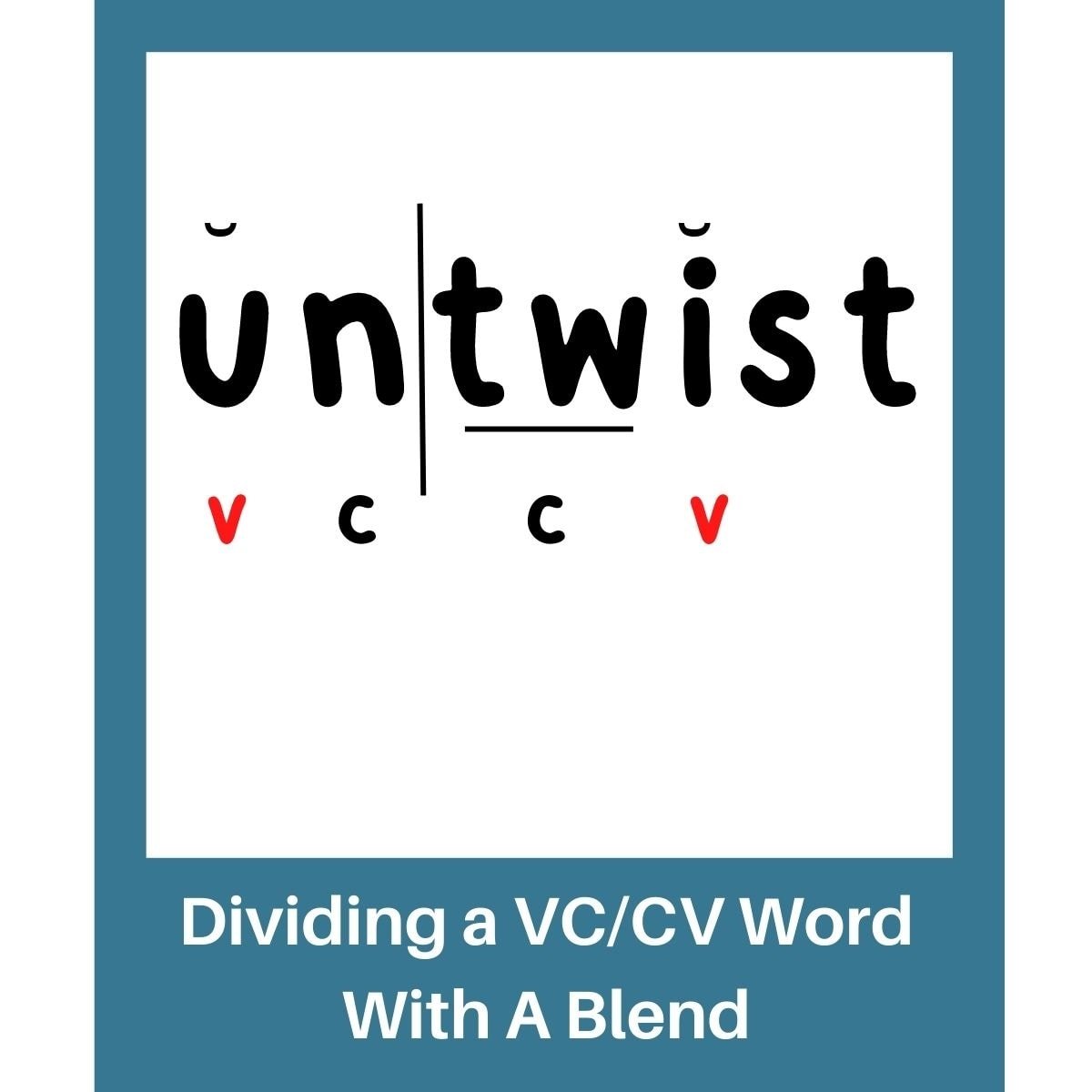
We love this Breaking Closed Syllable Words video! It’s super catchy and shows exactly what we’re discussing in this post.
Use it with your students when first introducing this concept, then sing it and refer to it often when practicing syllable division with VC/CV words.
💕 The Worksheets
We love these 3 VC/CV worksheets because they allow kids to practice dividing and reading VC/CV words in various ways.
Most importantly, children will feel successful as they master reading multisyllabic words. These are a free sample of our 20+ page bundle of syllable division worksheets!
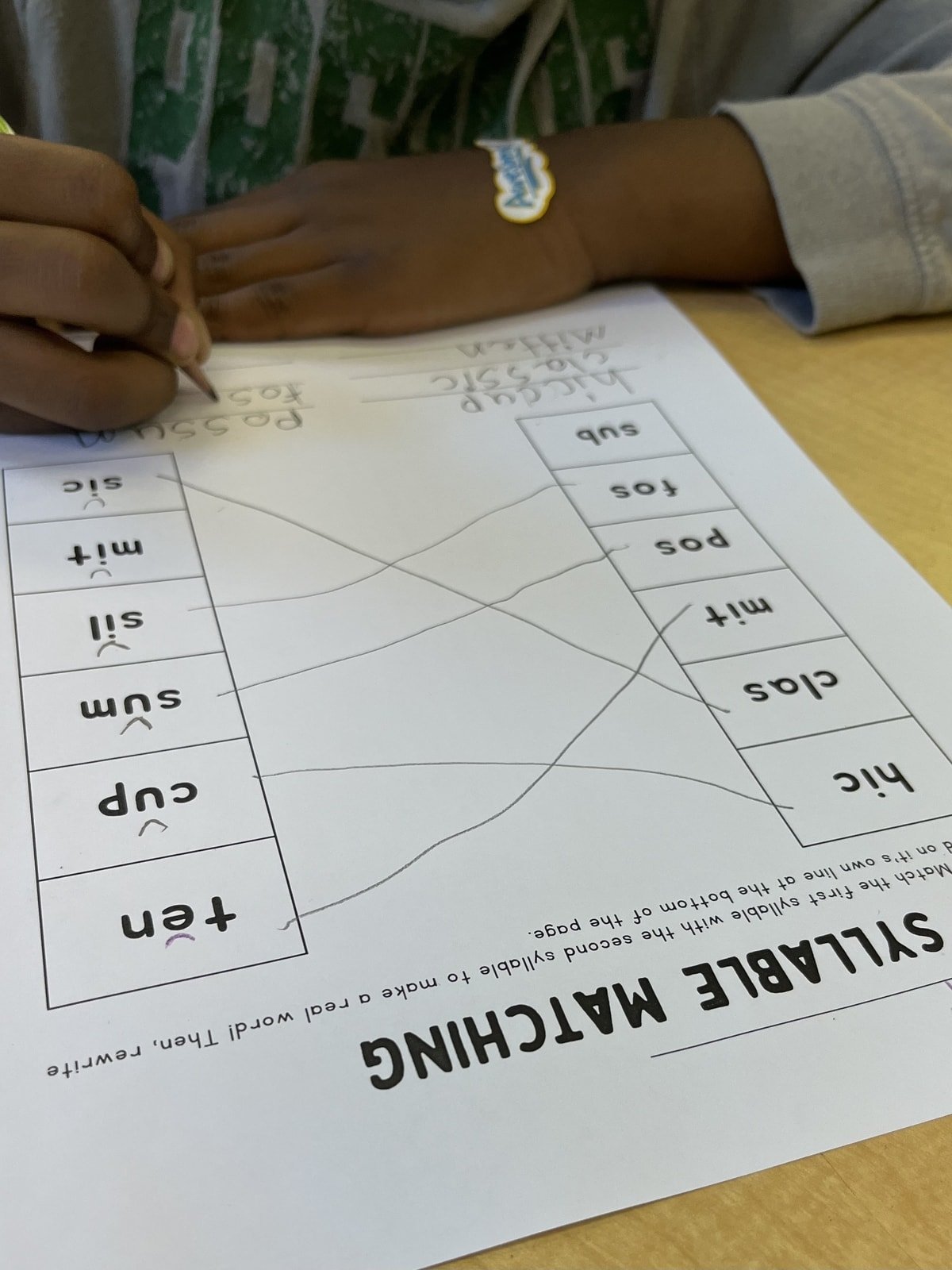
- VC/CV Practice: Students will divide words between the consonants to read words accurately.
- Syllable Matching: Children will match syllables to create real words. Then, children will put the syllables together to write and read VC/CV words.
- VC/CV Syllable Division: Students will learn to break apart VC/CV words that include consonant blends. *This is complex because there are three consonants between the vowels.
With all this practice, children should be on their way to mastering reading two-syllable words. Be sure to practice using decodable texts!
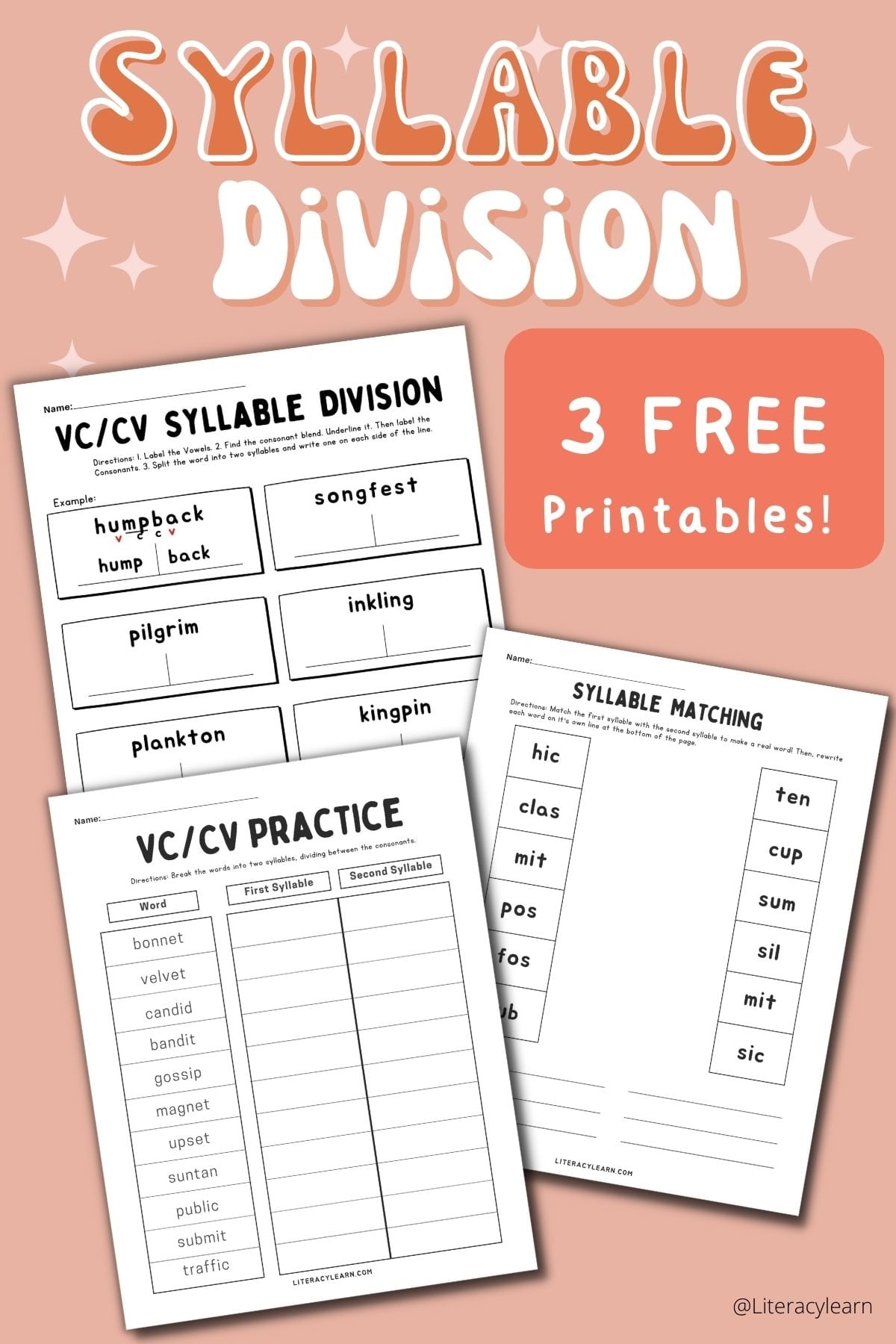
Download & Print
We’d love to hear about your experience using these worksheets!
Please leave a comment below or tag us on Instagram @literacylearn.
DOWNLOAD TERMS: All of our resources and printables are designed for personal use only in homes and classrooms. Each teacher must download his or her own copy. To share with others, please use the social share links provided or distribute the link to the blog post so others can download their own copies. Please do not save our files to a shared drive, reproduce our resources on the web, or make photocopies for anyone besides your own students. Your support in this allows us to keep making free resources for everyone! Please see our Creative Credits page for information about the licensed clipart we use. If you have any questions or concerns regarding our terms, please email us. Thank you!

